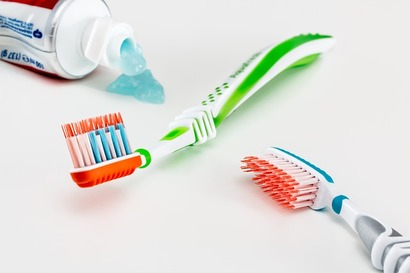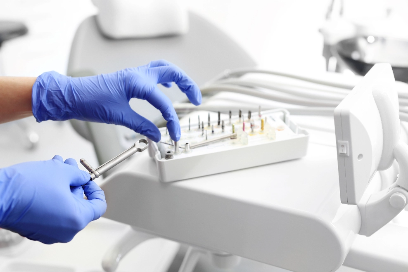Restorative Dentistry
What is Restorative Dentistry?
Restorative dentistry is a branch of dentistry that focuses on diagnosing and treating oral health problems in addition to using techniques that restore function and appearance of damaged or missing teeth.
Restorative dentistry is most commonly required to repair structures affected by decay, trauma and standard wear and tear. Dental restoration alows patients to regain the ability to eat comfortably, speak correctly and smile confidently.
What Procedures are used in Restorative Dentistry?
Restorative dentistry involves the use of many different techniques including dental fillings, crowns, bridges, implants, dentures, root canal therapy among others:
Dental Fillings: Fillings are one of the most prevalent restorative dentistry techniques. They are used for filling cavities in teeth to prevent further tooth penetration and restore the tooth structure. Tooth-colored materials like composite resin or porcelain are commonly used to match the natural color of the tooth, making the filling virtually invisible.
Dental Crowns: Dental crowns are tooth-shaped caps that entirely covers a damaged or impaired tooth. They provide strength, support, and protection to the tooth structure while restoring its shape and appearance. Crowns are often recommended for extensively decayed, cracked, or discolored teeth.
Dental Bridges: Dental bridges are used to replace missing teeth by anchoring artificial teeth (pontics) between two dental crowns. These crowns are placed on the adjacent healthy teeth, effectively “bridging” the gap caused by the missing tooth. Bridges not only restore functionality but also prevent the remaining teeth from shifting out of position.
Dental Implants: Dental implants are a revolutionary solution for replacing missing teeth. They consist of titanium posts surgically implanted into the jawbone, serving as artificial tooth roots. Once integrated with the bone, dental crowns are attached to the implants, providing a sturdy and long-lasting replacement for the missing teeth.
Root Canal Treatment: A root canal treatment is used when the dental pulp inside a tooth becomes infected or inflamed due to decay or trauma. This involves removing the damaged pulp, cleaning the interior of the tooth, and sealing it to prevent further infection. A crown is typically placed on the treated tooth to strengthen and protect it.
What are the Advantages of Restorative Dentistry?
Restorative Dentistry has a number of benefits to the patient. These include:
Improved Oral Health: Restoring damaged teeth not only enhances aesthetics but also improves oral health. By treating cavities and infections promptly, restorative dentistry helps prevent further complications that may lead to tooth loss or more extensive treatments.
Enhanced Functionality: Restorative treatments ensure that teeth can function properly for biting, chewing, and speaking. This is vital for maintaining a balanced diet and overall well-being.
Boosted Self-Confidence: A beautiful smile can significantly impact self-esteem and confidence. Restorative dentistry can correct dental imperfections, allowing individuals to feel more comfortable and self-assured in social and professional settings.
Preservation of Natural Teeth: By repairing damaged teeth, restorative dentistry aims to preserve as much of the natural tooth structure as possible, avoiding the need for extraction whenever possible.
What can a patient do to avoid the need for restorative dentistry?
Daily Teeth Cleaning
A good daily oral health routine is the best method of avoiding the need for restorative dental care. Daily brishing morning and night plus flossing with prevent tooth decay and improve gum health meaning you are less likely to have any issues with your teeth that require restorative dental care.
Although daily care will extend the life of your teeth, it will not eliminate long-term wear and tear of teeth so eventually, most people will require restorative care.
Regular Dental Checkups
Regular checkups with your dentist will improve the longevity of your teeth by catching any issues or potential issues earlier before they become major issues resulting in the loss of teeth. Using dental x-rays, expertise and imaging equipment, the dentist can see things you can’t.
Regular Visits to the Dental Hygienist
Despite daily teeth cleaning, yout teeth will still build tooth damaging plaque in areas you cannot access with your tooth brush. Overcoming this obstacles requires you to visit the dental hygienist wo can give your teeth the best clean possible using specialist equipment and techniques.

Trust Us For Your Dental Restoration Care
Restorative dentistry plays a vital role in ensuring oral health and enhancing smiles. With advancements in dental technology and materials, modern restorative procedures are more effective, comfortable, and aesthetically pleasing than ever before. Whether it’s a simple filling or a complex dental implant, restorative dentistry empowers individuals to regain their oral health, function, and confidence, paving the way for a brighter, healthier future. So, don’t hesitate to consult your dentist and explore the restorative options available to you. Your smile will thank you for it!



 Monday – Friday 8AM – 4PM
Monday – Friday 8AM – 4PM


